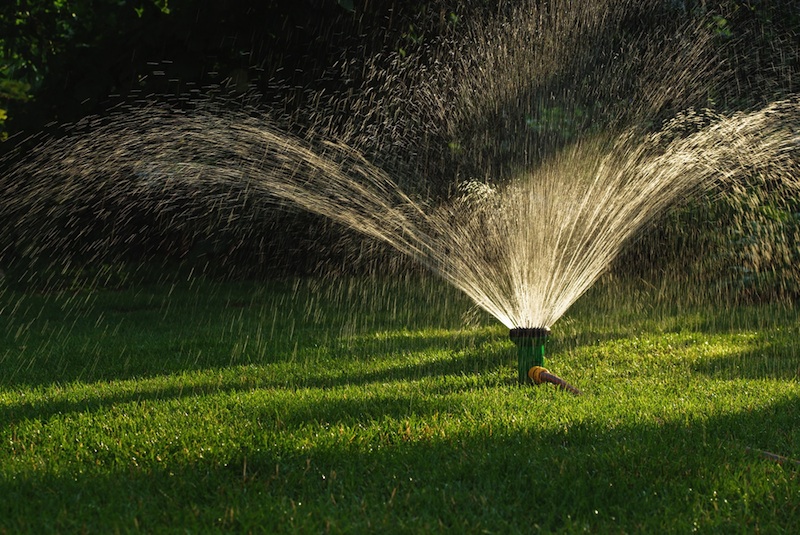
5 Ways We Waste Water

Water is a resource that much of the developed world takes for granted, but that many in the developing world struggle to find enough of every day.
That struggle could spread as climate change and other manmade pressures change the availability of water around the globe, and as Earth's population grows ever larger, making the need for that resource even more acute.
The number of humans on the planet could reach 11 billion people by the end of the century, the United Nations projects, up from just over 7 billion people now. Already, more than 2 billion people face a water scarcity each month, but tremendous amounts of water are still wasted. [What 11 Billion People Mean for Water Scarcity]
From lawns to flood irrigation, here are five ways that people waste water and some ways to reduce that waste.
Irrigation
Agriculture uses about 70 percent of the available freshwater on the planet. Around the world, most farming relies on flood irrigation — where fields are drenched with water and the excess runs off into nearby streams and rivers.
But flood irrigation wastes tons of water and can pollute waterways with fertilizers, creating dead zones in the ocean (where oxygen is used up and not available for marine creatures) and contributing to algal blooms, which can be toxic to marine life.
Some regions, such as Israel, have moved to highly efficient drip irrigation, which directs water right onto the roots of the plant. But such systems are expensive to implement and don't work for all crops, so many regions will probably shift toward intermediate solutions such as sprinklers, which produce less waste runoff, and covering crops to prevent water evaporation.
Lawns
Lawns are one of the thirstiest water hogs in cities and towns. While lawns may be appropriate in some areas, most green expanses aren't made of local grasses adapted to grow in the area. And the vast majority of manicured front yards require hefty watering to flourish.
As cities tighten their belts, some areas may require residents to water lawns less frequently or forgo lawn-watering altogether. In particularly arid regions, that may mean a lawn of cacti or rocks, whereas other areas may rip out the water-hungry grass species, such as St. Augustine, and replace them with mixtures of native grasses that guzzle less water. As a bonus, many of these native grasses are softer and less itchy than the old standbys.
Poor crop choice
As the population grows, it doesn't make sense for desert-dwellers to grow thirsty crops such as cotton or raise cattle, which requires much more water than producing an equivalent weight of wheat or potatoes.
As the planet becomes drier, countries will have to shift their economies, so that drier regions produce less thirsty products and wetter regions make water-hungry products such as beef.
Newer plants
But simply switching which crops are produced may not be enough for some regions of the world. Instead, they may need to manipulate the plants own systems' for dealing with drought to increase production.
One way to do that is to water crops less during certain parts of the harvest. The plants then direct more growth into the fruit, away from leaves and stems. That means farmers can grow more crops with less water.
Flushed down the toilet
One of the biggest sources of usable water is treated wastewater. After people brush their teeth, wash their vegetables or flush the toilet, most of that water is treated and sanitized.
While that water isn't really suitable for a big glass of water (unless you're on the International Space Station), much of it could be put to use watering crops, freeing up freshwater for drinking. Currently, the United States treats 70 percent of its wastewater, but only uses 4 percent of that amount. Increasing the wastewater usage would provide more water for everyone.
Follow Tia Ghose on Twitter and Google+. Follow LiveScience @livescience, Facebook & Google+. Original article on LiveScience.
Sign up for the Live Science daily newsletter now
Get the world’s most fascinating discoveries delivered straight to your inbox.

Tia is the managing editor and was previously a senior writer for Live Science. Her work has appeared in Scientific American, Wired.com and other outlets. She holds a master's degree in bioengineering from the University of Washington, a graduate certificate in science writing from UC Santa Cruz and a bachelor's degree in mechanical engineering from the University of Texas at Austin. Tia was part of a team at the Milwaukee Journal Sentinel that published the Empty Cradles series on preterm births, which won multiple awards, including the 2012 Casey Medal for Meritorious Journalism.










